Due to the launch of the new Samsung Galaxy S8 and Samsung Galaxy S8 Plus, many were surprised to learn that both devices were equipped with a main camera features very similar to those of the predecessor Samsung Galaxy S7 Edge: 12 megapixel sensor with a central aperture f/1.7, optical stabilizer and Dual Pixel system with autofocus. Maybe this might disappoint some fans, but then we will face both smartphones and see if they have reason to feel this way, and not only in this aspect.
Samsung Galaxy S8 Plus vs Samsung Galaxy S7 Edge
| Specs | Samsung Galaxy S8 Plus | Samsung Galaxy S7 Edge |
| Dimensions | 159.5 x 73.4 x 8.1 mm | 150.9 x 72.6 x 7.7 mm |
| Weight | 173 g | 157 g |
| Display | 6.2 inches | 5.5 inches |
| Resolution | 1440 x 2960 pixels (~529 ppi pixel density) | 1440 x 2560 pixels (~534 ppi pixel density) |
| Cameras | 12 MP, f/1.7 / 8 MP, f/1.7 | 12 MP, f/1.7 / 5 MP, f/1.7 |
| Software | Android OS, v7.0 | Android OS, v6.0 (upgradeable to v7.0) |
| Chipset | Qualcomm MSM8998 Snapdragon 835 | Exynos 8890 Octa |
| CPU | Octa-core (4x2.35 GHz Kryo & 4x1.9 GHz Kryo) | Octa-core (4x2.3 GHz Mongoose & 4x1.6 GHz Cortex-A53) |
| GPU | Mali-G71 MP20 | Mali-T880 MP12 |
| RAM / ROM | 4 GB / 64 GB (MicroSD, up to 256 GB) | 4 GB / 32/64/128 GB (MicroSD, up to 256 GB) |
| Battery | Non-removable, 3500 mAh | Non-removable, 3600 mAh |
Design
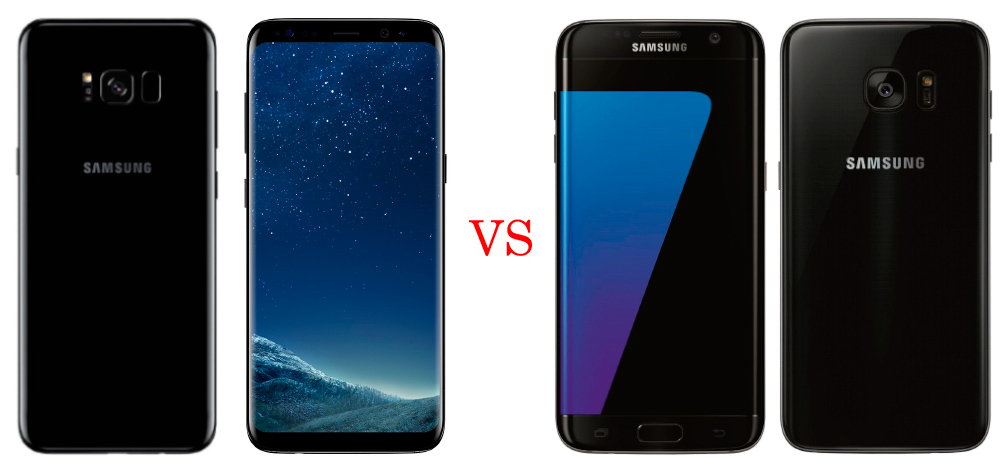
The Galaxy S8 Plus features a unibody glass and aluminum body, which is virtually reduced to the most minimalistic (in the absence of the central physical buttons) and is built in dimensions of 159.5 x 73.4 x 8.1 millimeters distributed in a weight of 173 grams. The now ex-flagship of the Korean company is composed of the same materials as the newcomer; however, it has slightly lower dimensions: 150.9 x 72.6 x 7.7 millimeters, as well as a lower weight: 157 grams. Both the new top of the range, as the S7 Edge, are IP68 certified, which makes them resistant to both water and dust.
Display
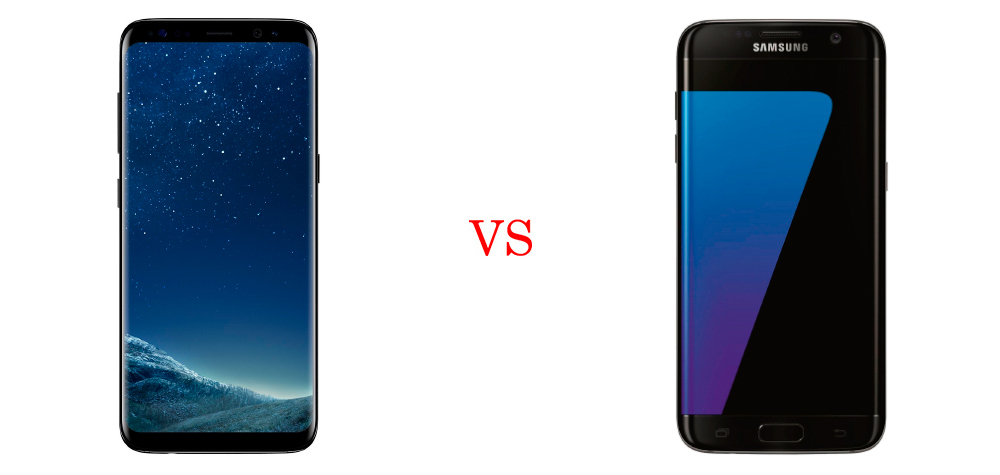
The S8 Plus features a 6.2-inch Super AMOLED display with QHD+ resolution (1440 x 2960 pixels) and a pixel density of 529 ppi, while the Galaxy S7 Edge has a 5.5-inch Super AMOLED display with 2K resolution (1440 x 2560 pixels) and a density of 534 ppi. The screen is much larger, but hardly noticeable in the hand, thanks to the Infinity Display technology that makes it appear less exaggerated in size, with a long and narrow screen.
Camera
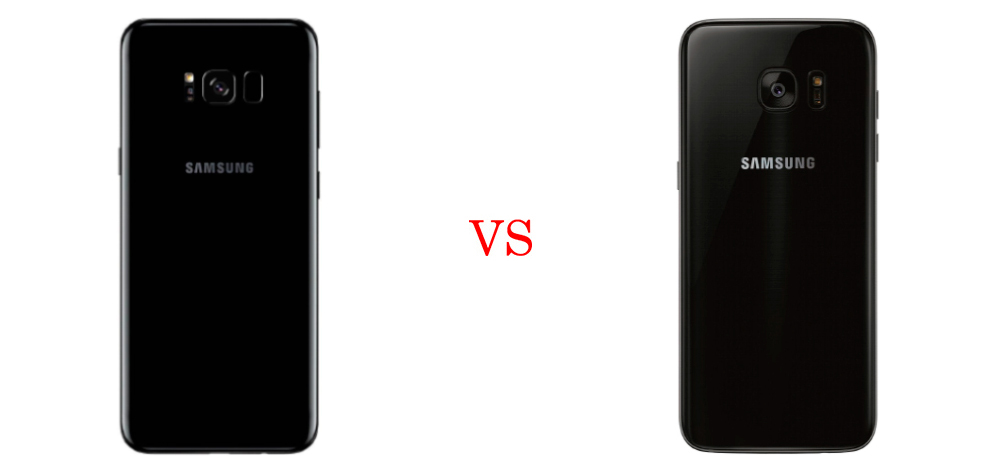
On paper, as already indicated, nothing changes: a 12 megapixel sensor with dual Pixel, autofocus, optical stabilization with 26 mm and f/1.7 aperture. Both also have a single LED flash. And, in fact, the behavior on both phones is similar, but not identical. There has been a good improvement in software management with encouraging results. The Galaxy S8 Plus manages to create sharper and more contrasting images, and improves from the point of view of white balance and cleanliness. At night the step forward is particularly evident, while during the day you have to see the photos on a PC to appreciate the difference.
As for the front camera, there is a considerable change here. Now it's a slightly less wide, but more defined sensor, which in fact goes from 5 to 8 megapixels. Equipped with autofocus and recognition, these features are often a success for selfies. In this case, the superior quality is much more tangible, while at night the improvement is less evident. As for the video, it has been subject to minor adjustments, a bit in contrast management and stabilization able to better mitigate the rolling shutter effect.
Hardware / Software
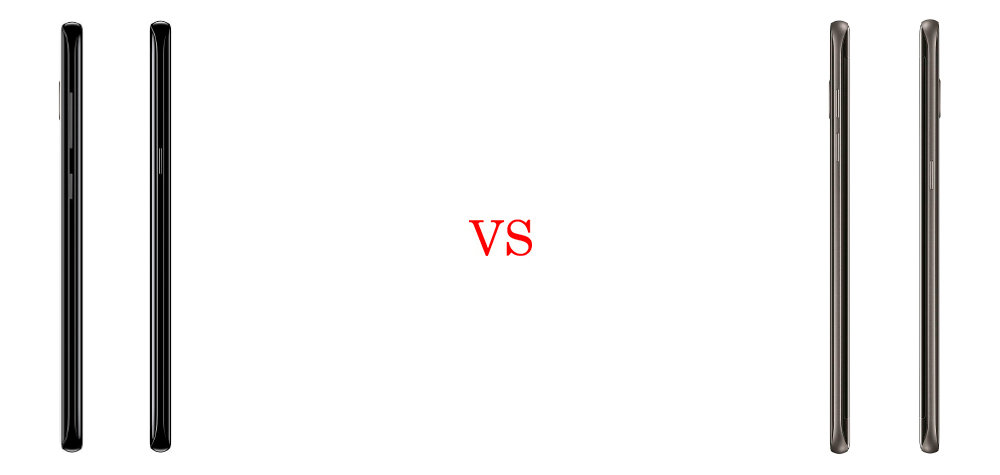
Speaking of the processor, the Samsung Galaxy S8 Plus features a Qualcomm Snapdragon 835 and the GPU Adreno 540 or a Samsung Exynos 8995 Octa and GPU Mali-G71 MP20 (depending of the market), while Galaxy S7 Edge has an Exynos 8890 Octa (quad-core 2.3 GHz + quad-core 1.6 GHz). The Galaxy S7 Edge processor is really a bomb, even a year after its release, but the Galaxy S8 Plus CPU is unmatched by any other device today, and already offers a great advantage in all of the benchmarks present in the market.
The Samsung Galaxy S8 Plus has 4 GB of RAM LPDDR4 and 64 GB of storage, expandable to 256 GB via a MicroSD card. Moreover, the Galaxy S7 Edge has 4 GB of RAM LPDDR4 and 32 GB of storage, expandable to 256 GB via microSD. The amount of RAM does not change from one Galaxy to another. The change, however, is in the ROM, which in Samsung's new smartphone offers the ability to store many more photos, videos and many other files.
Otherwise, the Samsung Galaxy S8 Plus comes to the market with Android 7.0 Nougat, while the Galaxy S7 Edge would come to your hands with Android 6.0 Marshmallow and TouchWiz user interface, but already upgradeable to the next version of the software, yes.
Battery Life
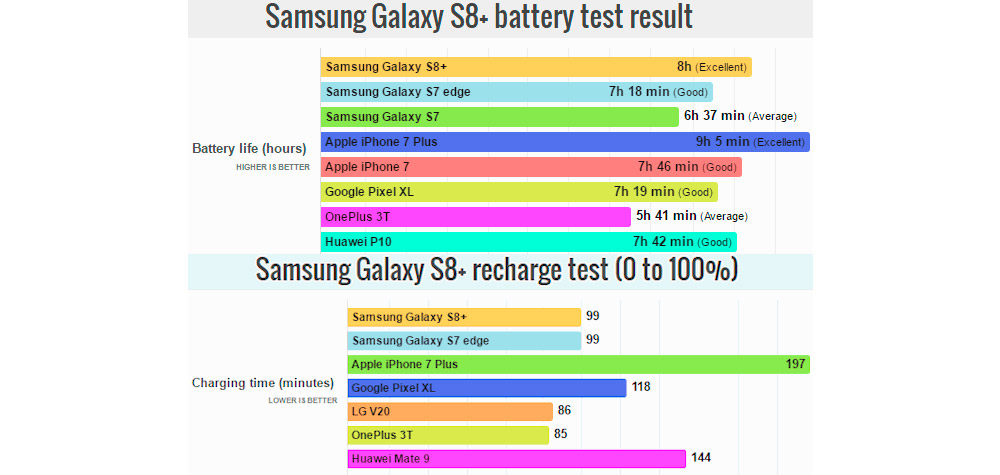
Although the battery of the latest model has 3500 mAh (that is, lower, but only slightly, at the 3,600 mAh of its predecessor), the tests conducted by the web PhoneArena reveal results that may interest and much to future buyers of the Samsung Galaxy S8 Plus. The tests were carried out using a pre-established routine, able to simulate the daily use experience. The new top-of-the-range is able to guarantee a duration of 40 minutes more, surely thanks to the new processor.
The portal has also performed tests to check the charging times from 0 to 100%, but in this case the difference turned out to be practically null, since both devices are equipped with the quick charge system Quick Charge 2.0. A certainly important aspect that relates to battery life and affect the final decision of all those who intend to renew their phones (especially on top of the varied offer).
In this regard, the Samsung Galaxy S8 Plus is proving to be able to withstand comparison with its predecessor, improving a bit with better and lower battery (100 mAh are not many, but still represent a decrease compared to the past, at least at a purely technical level). Fortunately, the optimization supposedly made by the chipset has favored the Samsung Galaxy S8 Plus.
Price
The price of the Smasung Galaxy S8 Plus is now around $ 1,000, while the price range of the S7 Edge varies between $ 490 - $ 917. In any case, it is expected that in the coming months prices will fall and the Samsung Galaxy S8 Plus will be more accessible for many more people.
Conclusion
Both are great devices with innovative features: the Galaxy S7 Edge, with its edge-to-edge display scoffed at criticism last year, but the Galaxy S8 Plus brings astonishment to a whole new level. The Infinity Display, the improvement of the photographic section, the optimization of the CPU and a really unique design win the title of winner in this comparison. However, the Galaxy S7 Edge, to date, is still a very good device, especially at the current price, but if you want the best of the best, it is obvious that you should go directly for the Galaxy S8 Plus.